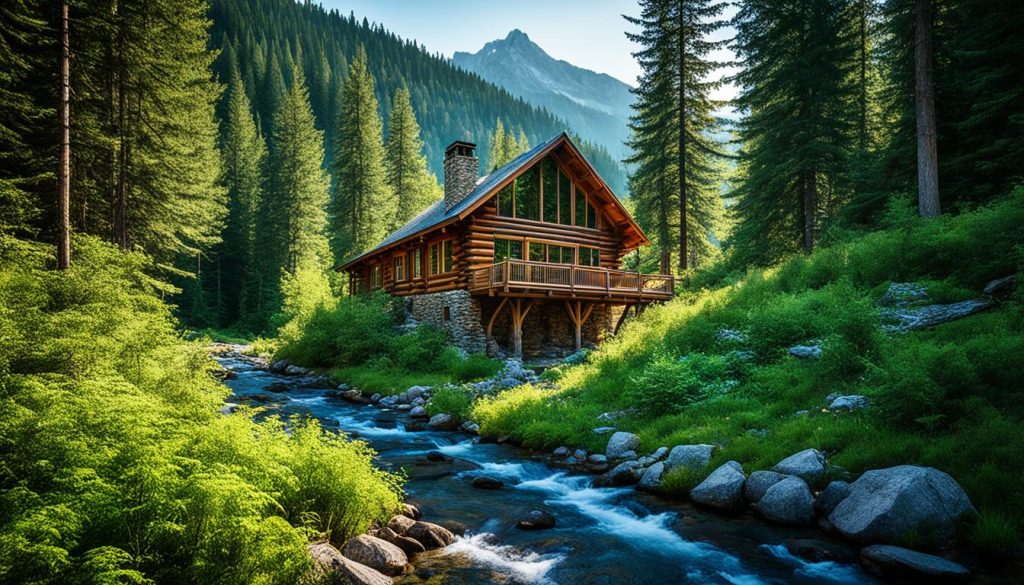As a seasoned survival and preparedness expert, I’m excited to share my insights on how to choose the perfect bug out location. Whether you’re concerned about natural disasters, civil unrest, or other emergency scenarios, having a well-planned bug out location can be a game-changer. By the end of this guide, you’ll know the key factors to consider and be equipped to secure your safe haven.
In this article, I’ll dive deep into the process of evaluating potential bug out locations, assessing proximity to critical resources, and ensuring your chosen location is accessible and sustainable. Preparing for the unexpected is crucial, and with the right strategy, you can safeguard your family and thrive during challenging times.
Evaluating Potential Bug Out Locations
When it comes to selecting a suitable bug out location, the proximity to critical resources and the accessibility of the site are key factors to consider. The accessibility and terrain of your bug out location can greatly impact your ability to reach and maintain the site. Prioritize locations that are relatively easy to access, with well-maintained roads or trails leading to the site. Avoid areas prone to flooding, landslides, or other natural hazards that could cut off your escape route. Additionally, consider the terrain, as a location with a mix of flat, open spaces and natural features like hills or forests can provide both visibility and natural cover.
Assessing Proximity to Resources
When evaluating potential bug out locations, it’s essential to assess the proximity to vital resources. This includes access to clean water sources, arable land for food production, and nearby sources of firewood or other fuel. Having these essential resources within a reasonable distance can significantly enhance the sustainability and self-sufficiency of your bug out site.
Considering Accessibility and Terrain
The accessibility of your bug out location is also crucial. An isolated, off-grid location may provide more security, but it’s important to balance that with your ability to reach the site and transport necessary supplies. Prioritize locations with well-maintained roads or trails leading to the site, ensuring you can easily access your bug out location in times of emergency.
Additionally, the terrain of the site should be carefully considered. A mix of flat, open spaces and natural features like hills or forests can offer both visibility and natural cover, enhancing your ability to monitor your surroundings and seek shelter when needed. Avoid areas prone to natural disasters, such as flood plains or steep slopes, as these could potentially cut off your escape route or put your safety at risk.
| Bug Out Location Criteria | Desirable Characteristics |
|---|---|
| Proximity to Resources |
|
| Accessibility |
|
| Terrain |
|
“The accessibility and terrain of your bug out location can greatly impact your ability to reach and maintain the site. Prioritize locations that are relatively easy to access, with well-maintained roads or trails leading to the site.”
How To Choose A Bug Out Location
Choosing the right bug out location is a crucial step in your overall survival strategy. To make an informed decision, it’s essential to carefully evaluate your specific needs and priorities. Begin by assessing the proximity of potential locations to essential resources, such as clean water sources, arable land, and natural shelters.
Next, consider the accessibility and terrain of the site. Is the location easily reachable, even in challenging circumstances? Does the terrain offer natural protection or potential obstacles that could hinder your ability to move around freely? Thoroughly investigate the area to ensure it aligns with your bug out plan.
- Identify your specific needs and priorities, such as proximity to resources, accessibility, and potential threats in your area.
- Research potential locations, considering factors like water sources, arable land, and the availability of natural resources.
- Visit the sites in person to assess their viability, examining the terrain, testing the water quality, and ensuring the location aligns with your overall survival strategy.
Remember, the right bug out location can make the difference between thriving and merely surviving in an emergency. By taking the time to carefully evaluate your options, you can increase your chances of finding a sustainable and secure refuge when disaster strikes.
| Criteria | Location A | Location B | Location C |
|---|---|---|---|
| Proximity to Water Source | 1 mile | 3 miles | 5 miles |
| Arable Land | 10 acres | 15 acres | 8 acres |
| Accessibility | Easy | Moderate | Challenging |
| Natural Shelter | Yes | No | Yes |
The table above compares the key factors to consider when choosing a bug out location, highlighting the advantages and disadvantages of three potential sites. By carefully evaluating these criteria, you can make an informed decision that best suits your unique needs and survival goals.

“The right bug out location can be the difference between thriving and merely surviving in an emergency.”
Factors for a Sustainable Bug Out Location
Achieving true self-sufficiency is crucial when selecting a sustainable bug out location. I must carefully consider factors like renewable energy sources, food and water production, and the availability of natural resources. By prioritizing sustainability, I can ensure my safe haven can withstand extended stays and provide for my needs in a crisis.
To enhance the viability of my bug out location, I’ll seek out areas with the potential for solar, wind, or hydroelectric power generation. Access to natural resources like timber, minerals, and wildlife can also bolster my ability to thrive off-grid. Additionally, I’ll look for land suitable for growing crops and raising livestock, ensuring a reliable food supply.
With a focus on sustainability, my bug out location can become a truly self-sufficient refuge, capable of meeting my essential needs in times of uncertainty. By prioritizing renewable energy, food and water production, and natural resource access, I can create a resilient haven that can weather any storm.


